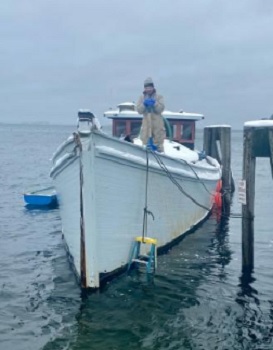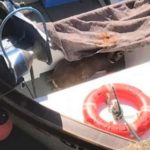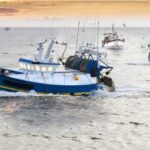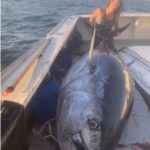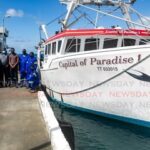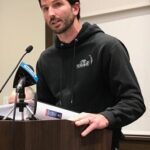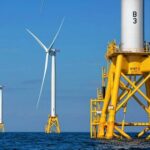Daily Archives: January 24, 2023
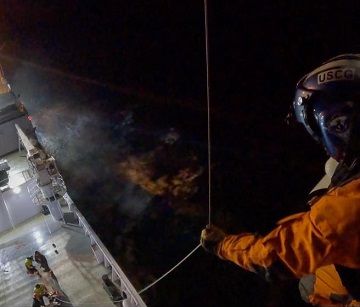
Coast Guard medevacs man from fishing vessel near Dutch Harbor, Alaska
A Coast Guard Air Station Kodiak aircrew, forward deployed to Cold Bay, medically evacuated a mariner from a fishing vessel near Dutch Harbor, Tuesday morning. The MH-60 Jayhawk helicopter aircrew hoisted the 47-year-old man from the 310-foot fishing vessel F/V Northern Eagle and transported him back to Cold Bay for a wing-to-wing transfer with LifeMed Alaska personnel. Watchstanders at the Coast Guard 17th District command center, in Juneau, received the initial request for the medevac Tuesday at 5:55 a.m. from the vessel’s crew that a fellow crew member had injured his right hand. >click to read< 20:52
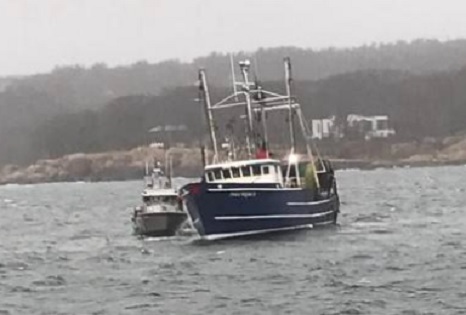
16-hour Coast Guard tow brings F/V Miss Trish II home
The crew of a Gloucester fishing vessel spent about 12 hours adrift far from shore after its transmission failed and before the Coast Guard towed it home. Coast Guard officials, responding to an emergency call from the Miss Trish II were able to reach the boat about 75 miles offshore over the weekend and tow her safely back to port. Jim Bridges, commanding officer at U.S. Coast Guard Station Gloucester said none of the six men aboard the Miss Trish II were injured during the incident. Crew on the Miss Trish II called the Coast Guard around 5 p.m. Saturday, Bridges said, indicating the ship’s engine would not start. >click to read< 18:34

NEFMC Council Executive Director Tom Nies Announces Retirement
The New England Fishery Management Council opened its January 24-26, 2023 meeting in Portsmouth, NH with the news that Executive Director Thomas A. Nies, a 25-year veteran of the Council staff, will be retiring this summer. The Council will immediately initiate a nationwide search for his replacement. Tom joined the Council staff in 1997. He first worked on the Atlantic Herring Fishery Management Plan and then spent 13 years as the Council’s lead analyst for groundfish. In that role, he led the Groundfish Plan Development Team (PDT), as he did the Herring PDT beforehand. Tom also helped develop a standardized bycatch reporting methodology for Northeast fisheries. He became Executive Director in 2013. >click to read< 14:29
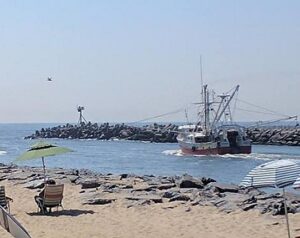
Long awaited dredging of the Manasquan Inlet in New Jersey is finally taking place
There is news all mayors and towns along the coastal towns from the southern shore end of Monmouth County and from the northern barrier island communities in Ocean County have longed to hear: that dredging will commence in the Manasquan Inlet. An announcement was made on Monday afternoon by U.S. Congressman Chris Smith (R – Monmouth/Ocean) that the U.S. Army Corps of Engineers head to the Manasquan Inlet as early as this week to commence a massive dredging operation which will help marine traffic and beaches. The dredging project will be split between the Manasquan Inlet and Shark River Inlet with the ladder getting a primary focus from the Army Corps of Engineers. >click to read< 12:38
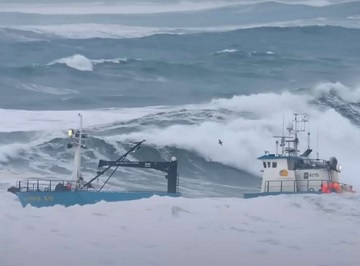
The Deadliest Catch and Other Crab Fishermen Need to Find a New Alaskan Spot Thanks to Climate Change
Even if you’ve only been a fan of Discovery’s “Deadliest Catch” for a short period of time, it’s still pretty obvious that the list of essential steps needed for the featured captains and boats to rake in a season’s worth of seafood remains consistent. On top of a meticulously maintained boat, needed are traps, bait, backup equipment, a solid crew, and more than a handful of other necessities. Of course, the most important detail is the one thing these brave fishermen are there for in the first place, and that’s the crab itself. However, due to climate change, the fishing industry on the Bering Sea has been flipped on its head. >click to read< 11:31
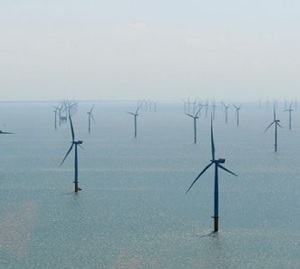
Industrial wind: Sierra Club should stick to their own back yard and leave mine alone
When I go to the beach, which I do almost every day, I prefer to look out on an empty ocean where the only sign of civilization is a fishing boat or two. I can see why a giant multinational energy company would want to spoil that view with 900-foot wind turbines that generate both electricity and money. But why would the Sierra Club? They cite climate change as the reason, but there are other sources of carbon-free energy such as nuclear, which the Club opposes. When I got him on the phone yesterday, Mayor Paul Kanitra told me the people in his town oppose “the industrialization of the last pristine natural resource we have in New Jersey.” “We don’t want this dystopian viewscape of red lights flashing at night and turbines droning,” Kanitra said. >click to read< 10:37
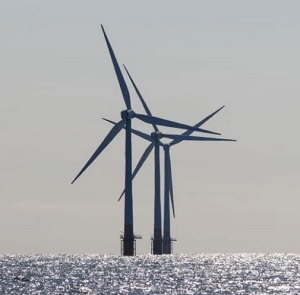
Southern Shore Lawmakers Say Unprecedented Whale Deaths Warrant Suspension of Offshore Wind Projects
Sen. Michael Testa and Assemblymen Erik Simonsen and Antwan McClellan are intensifying calls to suspend offshore wind projects following an unprecedented number of whale deaths along the coasts of New Jersey and New York. They join a chorus of concerned elected officials and environmental and commercial fishing groups who are worried the push for more offshore wind development has contributed to the death of seven whales in a little over a month, including two on the endangered species list. Despite the opposition, Gov. Phil Murphy continues his aggressive green energy goals, which calls for increasing offshore electric wind generation to 11,000 megawatts by 2040. >click to read< 08:08






